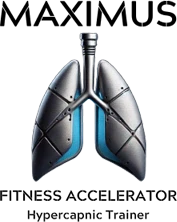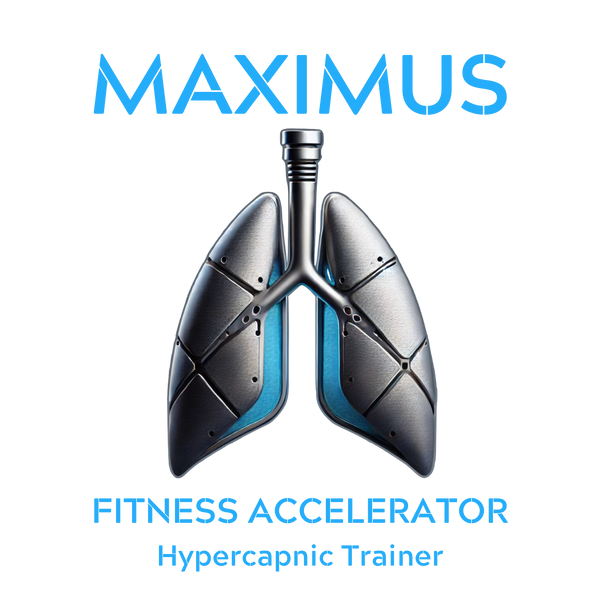
RMT - Respiratory Muscle Trainers Improve Athletic Performance
Share
Enhancing Athletic Performance with Respiratory Muscle Trainers
Introduction
Respiratory function often limits athletic performance, particularly during high-intensity and endurance activities. Respiratory muscle training (RMT) has emerged as a promising intervention to enhance performance by strengthening the muscles involved in breathing. This white paper explores the impact of inspiratory and expiratory breathing resistance devices on athletic performance, supported by multiple research references. Additionally, it outlines the potential development of a device tailored for athletes to use during exercise for maximal benefits.
The Role of Respiratory Muscles in Athletic Performance
Respiratory muscles, primarily the diaphragm and intercostal muscles, are critical to adequate ventilation during exercise. Weakness or fatigue in these muscles can lead to reduced oxygen delivery to working muscles, increased perception of effort, and impaired performance. Strengthening these muscles through targeted training can, therefore, provide significant benefits.
Inspiratory and Expiratory Breathing Resistance Devices
Inspiratory Muscle Training (IMT)
IMT focuses on strengthening the muscles involved in inhalation. Devices designed for IMT provide resistance during inspiration, forcing the user to work harder to inhale.
Critical Benefits of IMT:
- Enhanced Respiratory Muscle Strength: Studies have shown that IMT increases the strength and endurance of inspiratory muscles.
- Improved Exercise Performance: Research by Romer et al. (2002) demonstrated that IMT significantly improved cycling time-trial performance by reducing perceived breathlessness and respiratory muscle fatigue.
- Faster Recovery: Athletes using IMT recover more quickly between high-intensity intervals due to improved respiratory efficiency.
Expiratory Muscle Training (EMT)
EMT targets the muscles involved in exhalation, providing resistance during expiration.
Critical Benefits of EMT:
- Increased Expiratory Muscle Strength: Griffiths et al. (2005) found that EMT enhances the strength and power of expiratory muscles, leading to improved respiratory function.
- Improved Peak Expiratory Flow: Enhanced expiratory muscle strength contributes to better air control and expulsion, which is crucial for sports requiring rapid and forceful breathing.
- Reduced Breathlessness: By training the expiratory muscles, athletes experience less breathlessness during intense exercise, allowing for sustained performance.
Combined Inspiratory and Expiratory Muscle Training
Combining IMT and EMT can offer synergistic benefits, improving respiratory muscle function and overall athletic performance.
Research Evidence:
- Illi et al. (2012) showed that combined IMT and EMT significantly improved both inspiratory and expiratory muscle strength, enhancing exercise performance in athletes.
- HajGhanbari et al. (2013) reviewed the effects of RMT and found that combining IMT and EMT resulted in better respiratory function and reduced dyspnea, compared to either training alone.
Potential Development of a Dual-Resistance Breathing Device
Design Considerations
- Adjustable Resistance Levels: The device should feature adjustable resistance settings for both inspiration and expiration to cater to athletes of varying fitness levels and allow for progressive training.
- Ergonomic Design: The device must be comfortable, lightweight, and easy to use during various types of exercise.
- Real-Time Feedback: Incorporating sensors and a companion app to provide real-time feedback on breathing patterns, muscle engagement, and performance metrics can enhance training efficiency.
- Durability and Hygiene: Using high-quality, sweat-resistant, easily cleanable materials ensures durability and hygiene.
Implementation and Training Protocol
- Initial Assessment: Athletes should undergo a respiratory muscle strength assessment to determine baseline levels.
- Customized Training Plan: Develop a personalized training plan based on the athlete’s sport, fitness level, and respiratory assessment results.
- Progressive Training: Start with lower resistance settings, gradually increasing as the athlete’s respiratory muscles strengthen.
- Monitoring and Adjustment: Use real-time feedback to monitor progress and make necessary adjustments to the training plan.
Conclusion
Respiratory muscle training using inspiratory and expiratory resistance devices offers significant potential to enhance athletic performance. By strengthening the muscles involved in breathing, athletes can experience improved endurance, reduced breathlessness, and faster recovery. The development of a dual-resistance breathing device tailored for use during exercise can provide maximal benefits, helping athletes reach new heights in their performance.
References
- Illi, S. K., Held, U., Frank, I., & Spengler, C. M. (2012). Effect of respiratory muscle training on exercise performance in healthy individuals: a systematic review and meta-analysis. Sports Medicine, 42(8), 707-724.
- Romer, L. M., McConnell, A. K., & Jones, D. A. (2002). Effects of inspiratory muscle training on time-trial performance in trained cyclists. Journal of Sports Sciences, 20(7), 547-590.
- Griffiths, L. A., McConnell, A. K. (2005). The influence of inspiratory and expiratory muscle training upon rowing performance. European Journal of Applied Physiology, 94(5-6), 620-628.
- HajGhanbari, B., Yamabayashi, C., Buna, T. R., Coelho, J. D., Freedman, K. D., Morton, T. A., Palmer, S. A., Toy, M. A., Walsh, C., Sheel, A. W., & Reid, W. D. (2013). Effects of respiratory muscle training on performance in athletes: a systematic review with meta-analyses. Journal of Strength and Conditioning Research, 27(6), 1643-1663.
- Kilding, A. E., Brown, S., & McConnell, A. K. (2010). Inspiratory muscle training improves 100 and 200 m swimming performance. European Journal of Applied Physiology, 108(3), 505-511.
- Lomax, M. E., & McConnell, A. K. (2003). Inspiratory muscle fatigue affects latissimus dorsi electromyogram during submaximal rowing. European Journal of Applied Physiology, 89(2), 171-177.
- Kellerman, B. A., & Martin, A. D. (2003). Effects of inspiratory muscle training on exercise performance. Sports Medicine, 33(2), 117-138.
- Sheel, A. W. (2002). Respiratory muscle training in healthy individuals: physiological rationale and implications for exercise performance. Sports Medicine, 32(9), 567-581.
